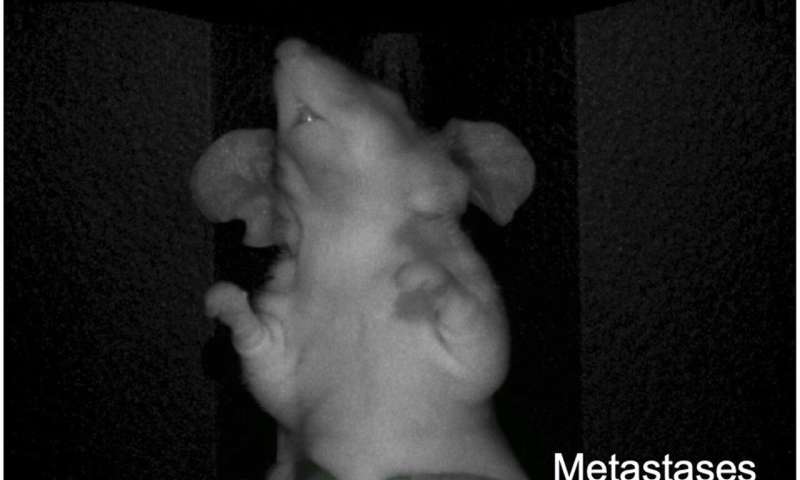Home » Health News » Anti-carcinoembryonic antigen-related cell adhesion molecule antibody for fluorescence visualization
Anti-carcinoembryonic antigen-related cell adhesion molecule antibody for fluorescence visualization

In this Oncotarget study, the authors test a novel anti-CEACAM antibody conjugated to a fluorescent dye for detection of multiple CEACAM antigens to enhance visualization of colorectal PDOX tumors and metastases in murine models.
The research team’s aim was to investigate mAb 6G5j binding characteristics and to validate fluorescence targeting of colorectal tumors and metastases in patient derived orthotopic xenograft models with fluorescently labeled 6G5j.
Nude mice received orthotopic implantation of patient-derived primary colon cancer and patient-derived colon cancer metastases.
Anti-CEACAM antibody 6G5j binds multiple CEACAMs which may lead to improved detection of tumor margins for tumors and metastases that have variable expression of CEA and other CEACAMs.
6G5j mAb may be useful for colon cancer detection for pre-surgical diagnosis and fluorescence-guided surgery.
Dr. Michael Bouvet from the Department of Surgery and the Moores Cancer Center at the University of California in La Jolla California USA as well as the VA San Diego Healthcare System in San Diego, CA, USA said in their Oncotarget article, “Early diagnosis and surgical resection of a wide variety of epithelial malignancies remain a vital challenge due to difficulty of intraoperative recognition of tumor margins and small metastases during minimally invasive procedures.”
While immune cells and endothelium solely express CEACAM1, human epithelial cells show a much more complex CEACAM expression pattern.
CEACAM1, CEACAM5 and CEACAM6 are co-expressed in epithelial cells of the gastro-intestinal tract and can also be over-expressed in endometrial, lung, ovarian, cervical, breast and colon cancers.
Prior studies have successfully utilized fluorescently-labeled antibodies in mouse models to specifically visualize pancreatic and colorectal tumors.
While anti-CEA antibodies conjugated to fluorophores have enabled tumor visualization, the simultaneous targeting of multiple antigens may further enhance visualization, provide more distinct tumor margins and improve detection of metastases.
Source: Read Full Article
-
 Does our environment affect the genes in our brains?
Sep 24, 2018
Does our environment affect the genes in our brains?
Sep 24, 2018 -
 Ground beef recall at Aldi Süd and Aldi Nord
Jul 23, 2019
Ground beef recall at Aldi Süd and Aldi Nord
Jul 23, 2019 -
 Fighting mutant influenza
Oct 24, 2018
Fighting mutant influenza
Oct 24, 2018 -
 Louisiana census tract cancer incidence report released
Apr 3, 2023
Louisiana census tract cancer incidence report released
Apr 3, 2023